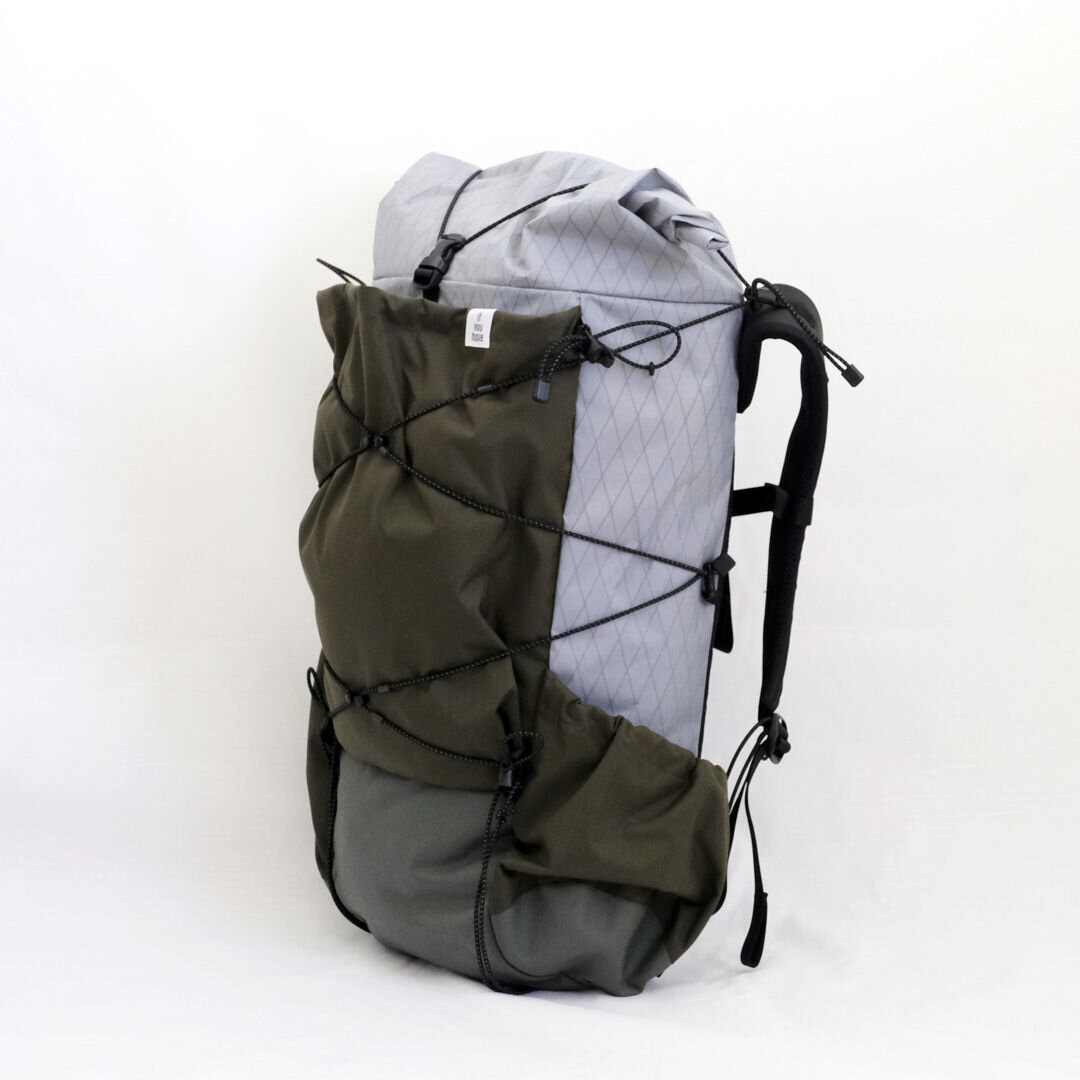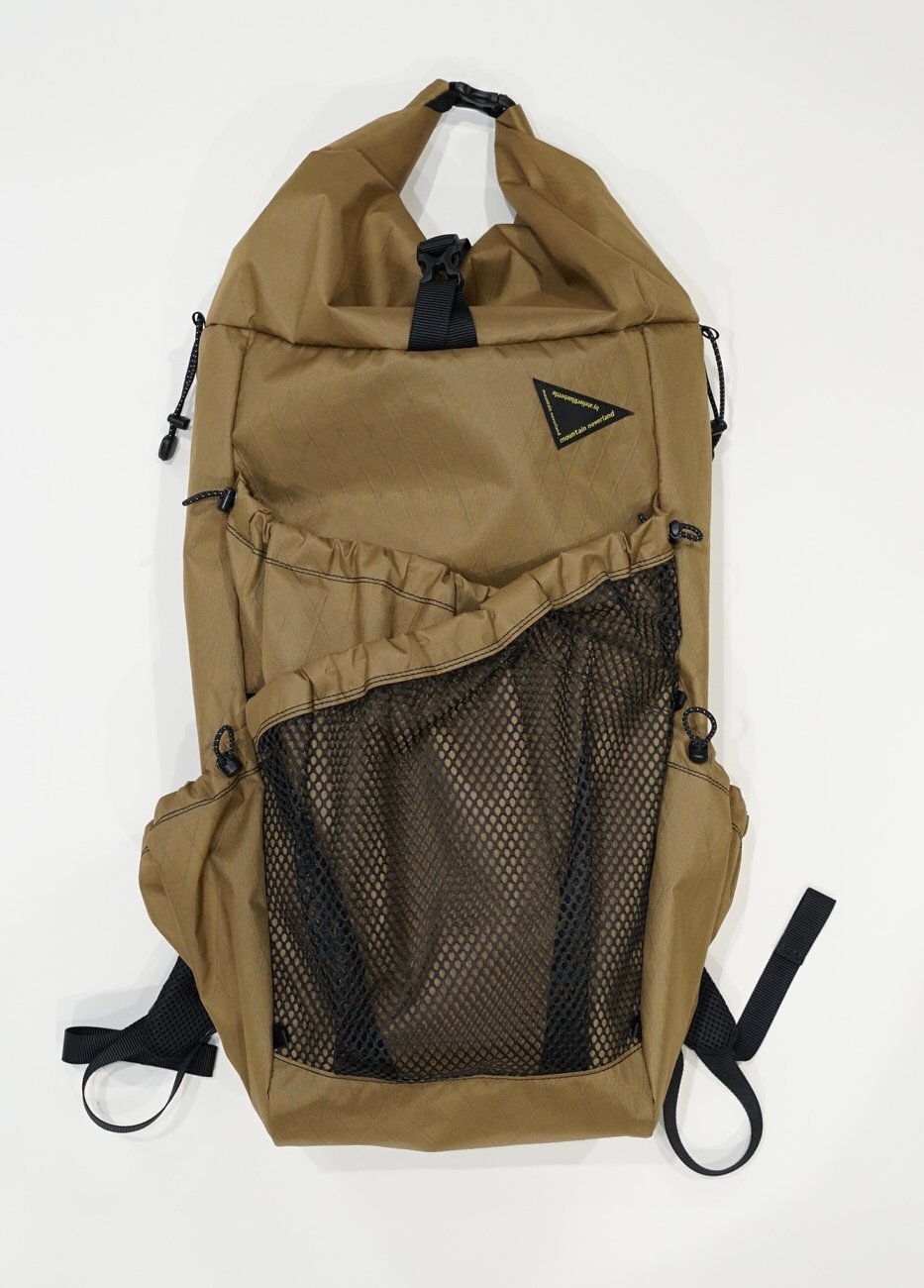Round-up on Japanese U.L. backpack makers
My brand new Yamatomichi MINI (in review)
The backpack is the most critical piece of gear that pretty much defines the mindset behind your outdoor activity.
"Show me your backpack, and I will tell you who you are!"
It has been just in recent years that the hiking community has started converting to handmade ultralight backpacks.
Highly influenced by magazines, the average hikers in Japan used to carry more equipment than necessary. There is a misconception about "playing it safe" in the outdoors that often translates to "carry gear for all the possible situations you might encounter."
Ok, let me disclaimer this. Carrying a bunch of "safety equipment" like emergency tarps, emergency food, emergency clothes...is not wrong. Still, this loses meaning in such situations as on an overcrowded trail like the Tanzawa range, where you meet hundreds of people on the way up, the huts are open, your phone has full reception, and the closest bus stop is just 2 hours down from the summit.
Yamatomichi
Born in Kamakura, Yamatomichi is the emblem of Japanese outdoor craftsmanship. Thanks to Instagram, the brand quickly grew from a simple handmade bag atelier to the most hyped brand for fashionable Japanese hikers. Sporting a Yamatomichi Mini (the 25L) or the Three (40L) has become a way to feel like belonging to a specific sub-culture of trendy ultralight hikers. Fair to say, their designs are outstanding, and they recently expanded their creation to pants, jackets, and shells.
Unfortunately, the elevated cost of their items and the restricted number of the production (always in a sold-out state) makes it difficult to purchase this brand, resulting in many potential customers looking into the used market. While I'm writing this article I'm testing one of their Mini 25L ultralight packs
I highly recommend to read Yamatomichi blog, where member of the community and the creator writes stories about fastpacking in Japan. It’s particularly interesting the series where he narrates the origin of the first MINI design.
AndWander
AndWander is transitioning from simple ultralight brand to an iconic fashion outdoor-inspired brand. Founded in Tokyo in 2011 by Keita Ikeuchi and Mihoko Mori, after the two met working as designers at Issey Miyake, AndWander makes clothing dedicated to the appreciation of nature and the outdoors. The brand’s hiking shell jackets, ultralight backpacks, fleeces, and fast-drying hiking pants represent a highly aesthetically refined interpretation of the latest materials and technologies in the performance outdoors gear sector. Famous for its collaborations (most recently with Salomon) AndWander with their diagonal front zip is still one of the most recognizable backpacks on the trail.
Paagoworks
PAAGO WORKS is a Japanese outdoor brand that was launched in 2011.
PAAGO is a portmanteau-esque word taken from “Let’s Pack And Go” with the implied message of “Let's pack and go out on an adventure!”
Their brand logo is an origami of shuriken (throwing star); the origami represents creativity while the shuriken represents functionality. "As a Japanese weapon, the shuriken also expresses my desire to create a tool that can be used by people from all over the world," says Paago Works creator.
Their most popular packs are the buddy, which has been revamped in x-pac fabric. Paago works also produces ultralight handcrafted trail running packs.
IfYouHave
IfYouHave it's a small brand from Hokkaido, founded by Takashi Yamaguchi. They are pretty popular on social networks where their roll-top UL pack is proudly worn by many folks on trails. They also collaborate with local makers to produce ultralight titanium gear like alcohol stoves and burners.
Atelier Blue Bottle
Founded in Tokyo around 2013, Atelier Blue Bottle is another popular gear maker. Their iconic "horn" roll top with diagonal front pockets are very easy to spot on trails and Instagram nowadays. From their ultralight gear catalog, you can spot an extensive use of X-Pac and Dyneema fabrics. Their triangular logo is a quality seal. On their website, Atelier Blue Bottle states that they take pride in keeping all production for their small brand within Japan—with everything handmade and nothing outsourced.
RawLow Mountain Works
Ryota Taniguchi and Yuzuru Kawai, two hikers and experienced bags and goods designers launched the brand in 2005. The iconic t-shirts "RLMW" are a popular item you'll see often on the trail. The ultralight backpack with large pockets and roll-top closure (the Bambi) offers 28L for 500 grams weight.
Ridge Mountain Gear
Watch-out for those
I tried to keep in this list only the brands I actually had the chance to see and touch in shops or on trails. In reality Japanese ultralight backpack industry is way wider than this and would be worth to watch out the Instagram profile of these other micro-brands:
Ogawand
Answer4
Minimalight
Sayama Works
Toraya Equipment
Blooper packs
Jindaiji Mountain Works
883 Designs
If you are interested in Japanese ultralight gear crafters, I recommend to read my Round-up on Japanese Outdoor Brands.































